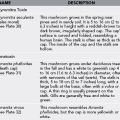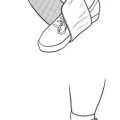Wildland Fires
Sensible Land Development Practices in Order to Protect Against Wildfire
1. Create access to adequate water sources.
2. Do not stack firewood next to houses.
3. Do not pile slash (e.g., branches, stumps, logs, and other vegetative residues) on home sites or along access roads.
4. Do not build structures on slopes with unenclosed stilt foundations.
5. Remove trees and shrubs growing next to structures, under eaves, and among stilt foundations.
6. Do not create roads that are steep, narrow, winding, unmapped, unsigned, unnamed, and bordered by slash or dense vegetation because these are prone to be difficult, if not impossible, for fire suppression vehicles to negotiate.
7. Do not place a dwelling or group of dwellings in an area without at least two or more access roads for simultaneous ingress and egress.
8. Do not create roads and bridges without the grade, design, and width to permit simultaneous evacuation by residents and access by firefighters and emergency medical personnel and their equipment.
9. Do not place dwellings and other structures on excessive slopes, within continuous or heavy fuel situations, or in box canyons.
10. Place constructed firebreaks and fuel breaks around home sites and within clusters of dwellings.
11. Be certain to prune, thin, landscape, or otherwise reduce living fuels, vegetation, and litter that readily contribute to spot fire development and fire intensity.
12. Do not construct homes with flammable building materials such as wooden shake shingles.
13. Do not expose propane tanks to the external environment.
14. Create a system that will allow delivery of water effectively before and during passage of a fire front in and around the structure.
Early Warning Signals or Indicators Associated with Extreme Fire Behavior
1. Continuous fine fuels, especially fully cured (dead) grasses
2. Large quantities of medium and heavy fuels (e.g., deep duff layers, dead-down logs)
3. Abundance of bridge or ladder fuels in forest stands (e.g., branches, lichens, suspending needles, flaky or shaggy bark, small conifer trees, tall shrubs extending from the ground surface upward)
4. Tight tree crown spacing in conifer forests
6. Significant amounts of dead material in elevated, shrubland fuel complexes
7. Seasonal changes in vegetation (e.g., frost kill)
8. Fire, meteorologic, or insect and disease impacts (e.g., preheated canopy or crown scorch; snow-, wind-, or ice-damaged stands; drought-stressed vegetation; or mountain pine beetle–killed stands)
Weather
Fire Behavior
1. Many fires that start simultaneously
2. Fire that smolders over a large area
3. Rolling and burning pine cones, agaves, logs, hot rocks, and other debris igniting fuel downslope
4. Frequent spot fires developing and coalescing
5. Spot fires occurring ahead of the main fire early on
6. Individual trees readily candling or torching out
7. Fire whirls that cause spot fires and contribute to erratic burning
8. Vigorous surface burning with flame lengths starting to exceed 1 to 2 m (3.3 to 6.6 ft)
9. Sizable areas of trees or shrubs that begin to readily burn as a “wall of flame”
10. Black or dark, massive smoke columns with rolling, boiling vertical development
Ten Standard Firefighting Orders
1. Keep informed of fire weather conditions, changes, and forecasts and how they may affect the area where you are located.
2. Know what the fire is doing at all times through personal observations, communication systems, or scouts.
3. Base all actions on current and expected behavior of the fire.
4. Determine escape routes and plans for everyone at risk, and make certain that everyone understands routes and plans.
5. Post lookouts to watch the fire if you think there is any danger of being trapped, of increased fire activity, or of erratic fire behavior.
6. Be alert, keep calm, think clearly, and act decisively to avoid panic reactions.
7. Maintain prompt and clear communication with your group, firefighting forces, and command and communication centers.
8. Give clear, concise instructions, and be sure that they are understood.
9. Maintain control of the people in your group at all times.
10. Fight the fire aggressively, but provide for safety first.
“Watch Out!” Situations in the Wildland Fire Environment
1. You are moving downhill toward a fire but must be aware that fire can move swiftly and suddenly uphill. Constantly observe fire behavior, fuels, and escape routes, assessing the fire’s potential to run uphill.
2. You are on a hillside where rolling, burning material can ignite fuel from below. When below a fire, watch for burning materials, especially cones and logs, that can roll downhill and ignite a fire beneath you, trapping you between two coalescing fires.
3. Wind begins to blow, increase, or change direction. Wind strongly influences fire behavior, so be prepared to respond to sudden changes.
4. The weather becomes hotter and drier. Fire activity increases, and its behavior changes more rapidly as ambient temperature rises and relative humidity decreases.
5. Dense vegetation with unburned fuel between you and the fire. The danger in this situation is that unburned fuels can ignite. If the fire is moving away from you, be alert for wind changes or spot fires that may ignite fuels near you. Do not be overconfident if the area has burned once because it can reignite if sufficient fuel remains.
6. You are in an unburned area near the fire where terrain and cover make travel difficult. The combination of fuel and difficult escape makes this dangerous.
7. You are traveling or working in an area you have not seen in daylight. Darkness and unfamiliarity create a dangerous combination.
8. You are unfamiliar with local factors influencing fire behavior. When possible, seek information on what to expect from knowledgeable people, especially those from the area.
9. By necessity, you have to make a frontal assault on a fire with tankers. Any encounter with an active line of fire is dangerous because of proximity to intense heat, smoke, and flames, along with limited escape opportunities.
10. Spot fires occur frequently across the fire line. Generally, increased spotting indicates increased fire activity and intensity. The danger is that of entrapment between coalescing fires.
11. The main fire cannot be seen, and you are not in communication with anyone who can see it. If you do not know the location, size, and behavior of the main fire, planning becomes difficult.
12. An unclear assignment or confusing instructions have been received. Make sure that all assignments and instructions are fully understood.
13. You are drowsy and feel like resting or sleeping near the fire line in unburned fuel. This may lead to fire entrapment. No one should sleep near a wildland fire. If resting is absolutely necessary, choose a burned area that is safe from rolling material, smoke, reburn, and other dangers or seek a wide area of bare ground or rock.
14. Fire has not been scouted and sized up.
15. Safety zones and escape routes have not been identified.
16. You are uninformed on strategy, tactics, and hazards.
17. No communication link with crew members or supervisor has been established.
18. A line has been constructed without a safe anchor point.
Wildland-Urban “Watch Out!” Situations
1. Access is poor (e.g., narrow roads, twisting and single-lane routes).
2. Local bridges are narrow and/or have light or unknown load limits.
3. Winds are strong, and erratic fire behavior is occurring.
4. The area contains garages with closed, locked doors.
5. The water supply is inadequate to attack the fire.
6. Structure windows are black or smoked over.
7. There are septic tanks and leach lines.
8. A structure is burning with puffing rather than steady smoke.
9. Construction of structures includes wood, with shake shingle roofs.
10. Natural fuels occur within 9 m (29.5 ft) of the structures.
11. Known or suspected panicked individuals are in the vicinity.
12. Structure windows are bulging, and the roof has not been vented.
13. Additional fuels can be found in open crawl spaces beneath the structures.
14. Firefighting is taking place in or near chimney or canyon situations.
Vehicle Behavior in a Fire Situation
1. The engine may stall and not restart.
2. The vehicle may be rocked by convection currents.
3. Smoke and sparks may enter the cab.
4. The interior, engine, or tires may ignite.
5. Temperatures increase inside the cab because heat is radiated through the windows.
6. Metal gas tanks and containers rarely explode.
7. If it is necessary to leave the cab after the fire has passed, keep the vehicle between you and the fire.
8. If smoke obstructs visibility, turn on the headlights and drive to the side of the road away from the leading edge of the fire. Try to select an area of sparse vegetation offering the least combustible material.
9. Attempt to shield your body from radiant heat energy by rolling up the windows and covering up with floor mats or hiding beneath the dashboard. Cover as much skin as possible.
10. Stay in the vehicle as long as possible. Unruptured gas tanks rarely explode, and vehicles usually take several minutes to ignite.
11. Grass fires create about 30 seconds (maximum) of flame exposure, and chances for survival in a vehicle are good. Forest fires create higher-intensity flames lasting 3 to 4 minutes (maximum) and lowering changes for survival. Staying in a vehicle improves chances for surviving a forest fire. Remain calm.
12. A strong, acrid smell usually results from burning paint and plastic materials, caused by small quantities of hydrogen chloride released from breakdown of polyvinyl chloride. Hydrogen chloride is water soluble, and discomfort can be relieved by breathing through a damp cloth. Urine is mostly water and can be used in emergencies.
Guidance for People in a Vehicle during a Wildland Fire
Positioning Your Car
Inside Your Car
1. Stay inside your car, because it offers the best level of protection from radiant heat as the fire front passes.
2. Turn headlights and hazard warning lights on to make the car as visible as possible.
3. Tightly close all windows and doors.
4. Shut all the air vents, and turn off the air conditioning.
6. Get down below the window level into the foot wells, and shelter under woolen blankets.
As the Fire Front Passes
1. Stay in the care until the fire front passes and the temperature outside the car has dropped.
2. Fuel tanks are unlikely to explode.
3. As the fire front approaches, the intensity of the heat will increase, along with the amount of smoke and embers.
4. Smoke will gradually enter the car, and fumes will be released from the interior of the car. Stay as close to the floor as possible to minimize inhalation, and cover the mouth with a moist cloth.
5. Tires and external plastic parts may catch on fire. The car interior may catch on fire.
6. Once the fire front has passed and the temperature has dropped, cautiously exit the car.
7. Move to a safe area, such as a strip of land that has already burned.
8. Stay covered in woolen blankets, continue to drink water, and await assistance.
Guidance for People in a Building During a Wildland Fire
1. A fire within sight or smell is a fire that endangers you.
2. More unattended houses burn down.
3. Evacuation when fire is close is too late; evacuation must be done well before danger is apparent.
4. More people are injured and killed in the open than in houses.
Before fire approaches a dwelling, take the following precautions:
1. If you plan to stay, evacuate your pets and livestock and all family members not essential to protecting the home well in advance of the fire’s arrival.
2. Be properly dressed to survive the fire. Wear long pants and boots, and carry for protection a long-sleeved shirt or jacket made of cotton fabrics or wool. Synthetics should not be worn because they can ignite and melt. Wear a hat that can offer protection against radiation to the face, ears, and neck areas. Wear leather or natural-fiber gloves, and have a handkerchief handy to shield the face, water to wet it, and safety goggles.
3. Remove combustible items from around the house, including lawn and poolside furniture, umbrellas, and tarp coverings. If they catch fire, the added heat could ignite the house.
4. Ensure that anything that might be tossed around by strong fire-induced winds is secured.
5. Ensure that the areas around any external propane tanks are fuel free for a considerable distance.
6. Close outside attic, eave, and basement vents to eliminate the possibility of sparks blowing into hidden areas within the house. Close window shutters.
7. Place large plastic trash cans or buckets around the outside of the house, and fill them with water. Soak burlap sacks, small rugs, and large rags to use in beating out burning embers or small fires. Inside the house, fill bathtubs, sinks, and other containers with water. Toilet tanks and water heaters are important water reservoirs.
8. Place garden hoses so that they will reach any place on the house. Use the spray gun type of nozzle, adjusted to spray.
9. If you have portable gasoline-powered pumps to take water from a swimming pool or tank, make sure they are operating and in place.
10. Place a ladder against the roof of the house opposite the side of the approaching fire. If you have a combustible roof, wet it down or turn on any roof sprinklers. Turn on any special fire sprinklers installed to add protection. Do not waste water. Waste can drain the entire water system quickly.
11. Back your car into the garage and roll up the car windows. Disconnect the automatic garage door opener (otherwise, in case of power failure, you cannot remove the car). Close all garage doors.
12. Place valuable papers and mementos inside the car in the garage for quick departure, if necessary. In addition, place all pets in the car.
13. Close windows and doors to the house to prevent sparks from blowing inside. Close all doors inside the house to prevent drafts. Open the damper on any fireplace to help stabilize outside-inside pressure, but close the fireplace screen so that sparks will not ignite the room. Turn on a light in each room to make the house more visible in heavy smoke.
14. Turn off the main gas supply to stoves and furnaces.
15. If you have time, take down drapes and curtains. Close all venetian blinds or noncombustible window coverings to reduce the amount of heat radiating into the house. This provides added safety in case the windows give way because of heat or wind.
16. As the fire approaches, go inside the house. Stay calm; you are in control of your immediate environment.
17. After the fire passes, check the roof immediately. Extinguish any sparks or embers. Then check the attic for hidden burning sparks. If you have a fire, enlist your neighbors to help fight it. For several hours after the fire, recheck for smoke and sparks throughout the house.
If You Cannot Escape an Approaching Wildfire
1. Select an area that will not burn—the bigger the better or, failing that, an area with the least amount of combustible material, and one that offers the best microclimate (e.g., depression in the ground).
2. Use every means possible (e.g., boulders, rock outcrops, large downed logs, trees, snags) to protect yourself from radiant and convective heat emitted by the flames.
3. Protect your airway from heat at all costs, and try to minimize smoke exposure.
4. Try to remain as calm as possible.
5. If you are caught out in the open and are likely to be entrapped or burned over by a wildfire and not able to take refuge in a vehicle, building, or fire shelter:
Surviving a Wildland Fire Entrapment or Burnover
1. Acknowledge the stress you are feeling. Most people are afraid when trapped by fire. Accept this fear as natural so that clear thinking and intelligent decisions are possible. If fear overwhelms you, judgment is seriously impaired and survival becomes more a matter of chance than of good decision making.
2. Protect yourself against radiation at all costs. Many victims of forest fires die before the flames reach them. Radiant heat quickly causes heatstroke. Find shielding to reduce heat rays quickly in an area that will not burn, such as a shallow trench, crevice, large rock, running stream, large pond, vehicle, building, or the shore water of a lake. Do not seek refuge in an elevated water tank. Avoid wells and caves because oxygen may be used up quickly in these restricted places; consider them a last resort. To protect against radiation, cover the head and other exposed skin with clothing or dirt.
3. Regulate your breathing. Avoid inhaling dense smoke (which can impair both your judgment and eyesight). Keep your face near the ground, where there is usually less smoke. Hold a dampened handkerchief over the nose. Match your breathing with the availability of relatively fresh air. If there is a possibility of breathing superheated air, place a dry, not moist, cloth over the mouth. The lungs can withstand dry heat better than moist heat.
4. Do not run blindly or needlessly. Unless a clear path of escape is indicated, do not run. Move downhill and away from the flank of the fire at a 45-degree angle where possible. Conserve your strength. If you become exhausted, you are much more prone to heatstroke and may easily overlook a place of safe refuge.
5. Burn out fuels to create a safety zone if possible. If you are in dead grass or low shrub fuels and the approaching flames are too high to run through, burn out as large an area as possible between you and the fire edge. Step into the burned area and cover as much of your exposed skin as possible. This requires time for fuels to be consumed and may not be effective as a last-ditch effort, nor does this work well in an intense forest fire.
6. Lie prone on the ground. In a critical situation, lie face down in an area that will not burn. Your chance of survival if the fire overtakes you is greater in this position than standing upright or kneeling.
7. Enter the burned area whenever and wherever possible. Particularly in grass, low shrubs, or other low fuels, do not delay if escape means passing through the flame front into the burned area. Move aggressively and parallel to the advancing fire front. Choose a place on the fire’s edge where the flames are less than 1 m (3.3 ft) deep and can be seen through clearly, and where the fuel supply behind the fire has been mostly consumed. Cover exposed skin and take several breaths, then move through the flame front as quickly as possible. If necessary, drop to the ground under the smoke for improved visibility and to obtain fresh air.
Personal Gear for a Rescue Mission on a Wildland Fire Incident
1. Boots (leather, high-top, lace-up, nonslip soles, extra leather laces)
2. Socks (cotton or wool, at least two pairs)
3. Pants (natural fiber, flameproof, loose fitting, hems lower than boot tops)
5. Shirt (natural fiber, flameproof, loose fitting, long sleeves)
6. Gloves (natural fiber or leather, extra pair)
7. Hat (hard hat and possibly a bandana, stocking cap, or felt hat)
11. Sleeping bag and ground cover
16. Radio (AM radio will receive better in rough terrain; FM is more line-of-sight; emergency personnel should have a two-way radio)
17. Bolt cutters (carried in vehicles to get through locked gates during escape from flare-ups or in the rescue of trapped people)
18. Miscellaneous items (mess kit, compass, flashlight, extra batteries, toilet paper, pencil, notepaper, flagging tape, flares, matches [windproof], can opener, washcloth, toiletries, insect repellent, plastic bags, knife, first-aid kit, and lip balm)
How to Report a Wildland Fire to Local Authorities
A caller should be prepared to provide the following information when reporting a fire:
1. Name of person giving the report
2. Where the person can be reached immediately
3. Where the person was at the time the fire was discovered
4. Location of the fire; orient the fire to prominent landmarks such as roads, creeks, and mileposts on the highways
5. Description of the fire: color and volume of the smoke, estimated size, and flame characteristics if visible
6. Whether anyone is fighting the fire at the time of the call
Portable Fire Extinguishers
Extinguishers are chosen based on the three major classes of fires:
Class A fires: fueled by ordinary combustible materials such as wood, paper, cloth, upholstery, and many plastics—use water, dry chemical, or liquefied gas extinguishers
Class B fires: fueled by flammable liquids and gases such as kitchen greases, paints, oil, and gasoline—use carbon dioxide or dry chemical extinguishers
Class C fires: fueled by live electrical wires or equipment such as motors, power tools, and appliances—use dry chemical or liquefied gas extinguishers






